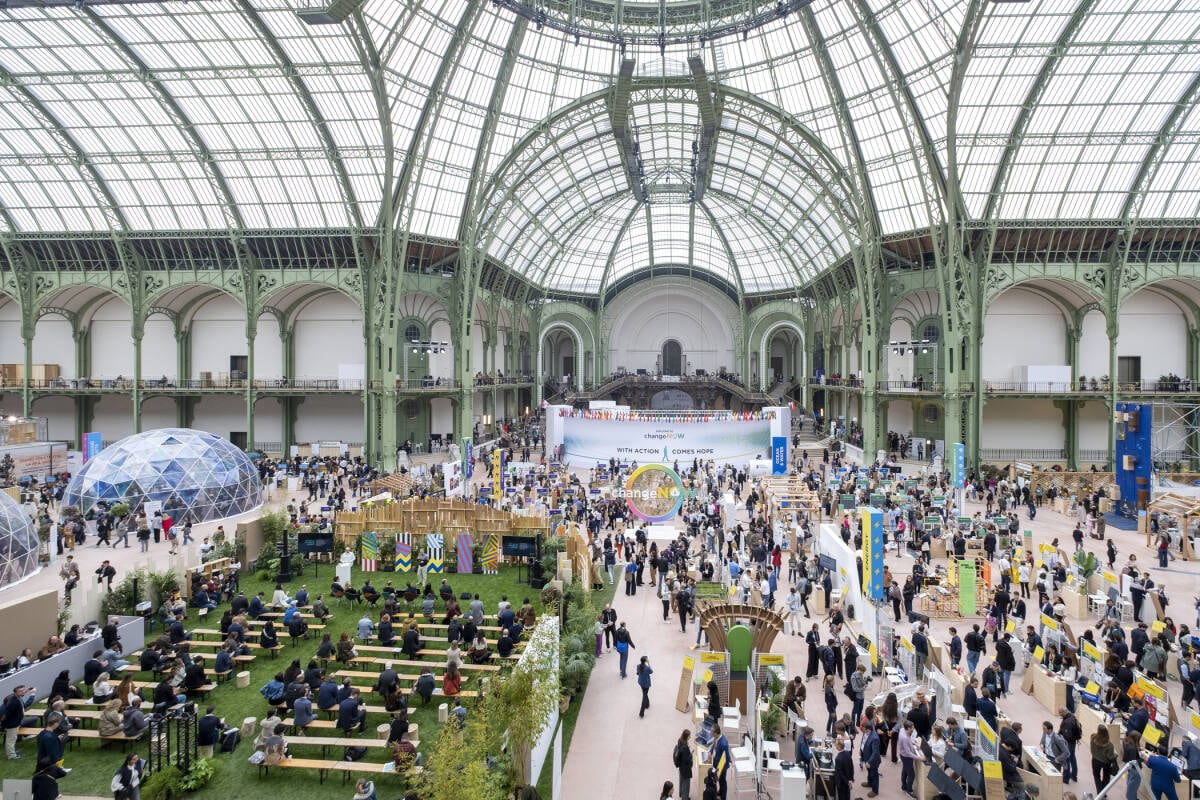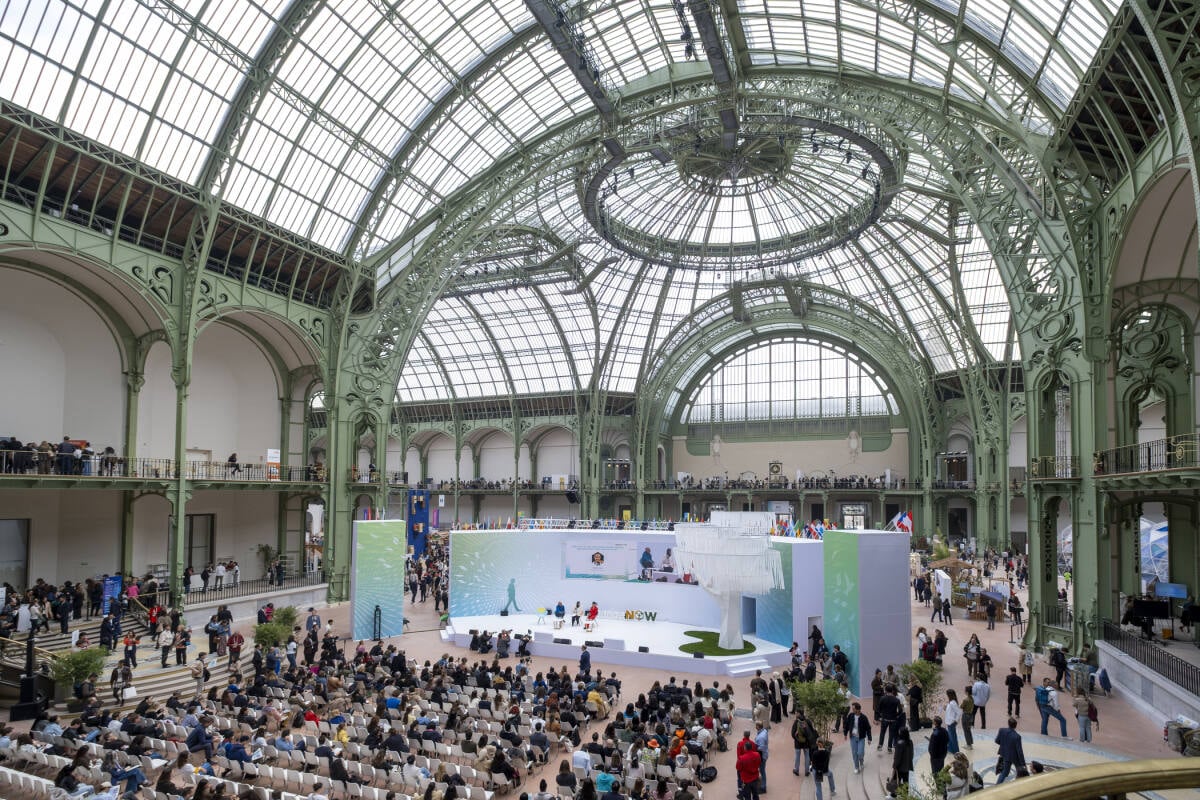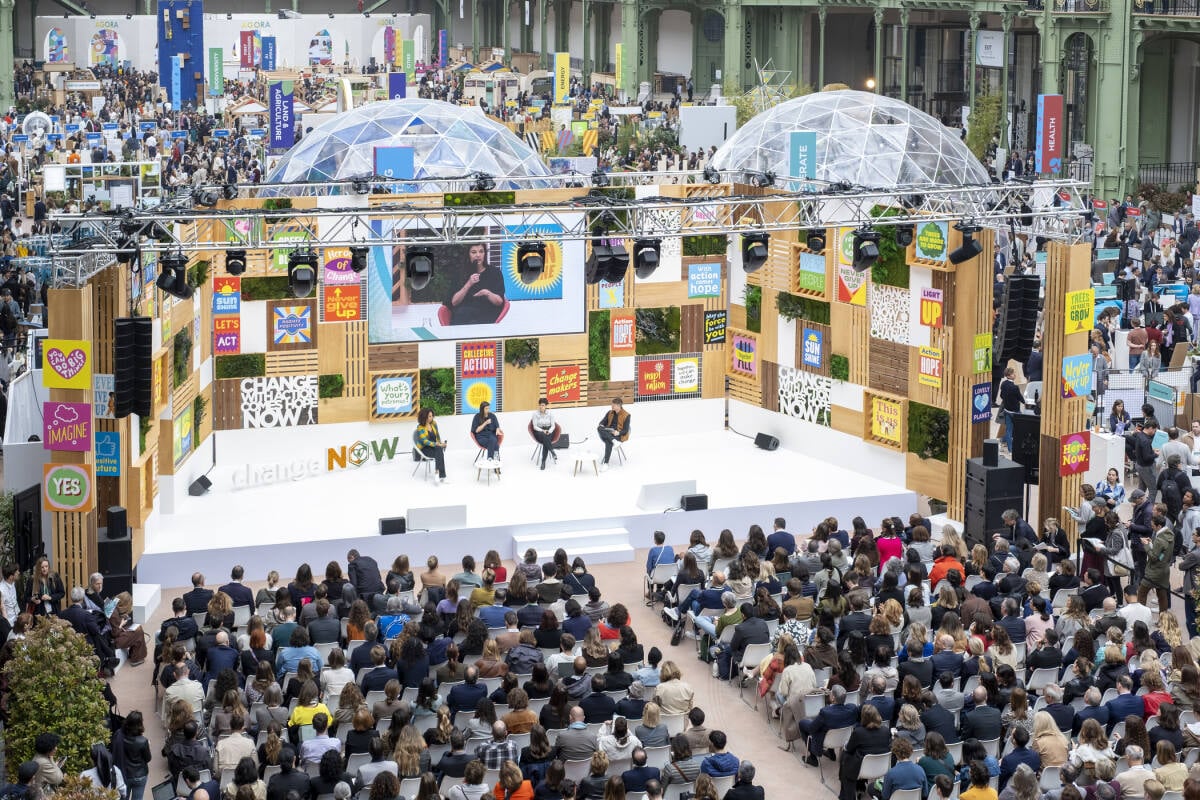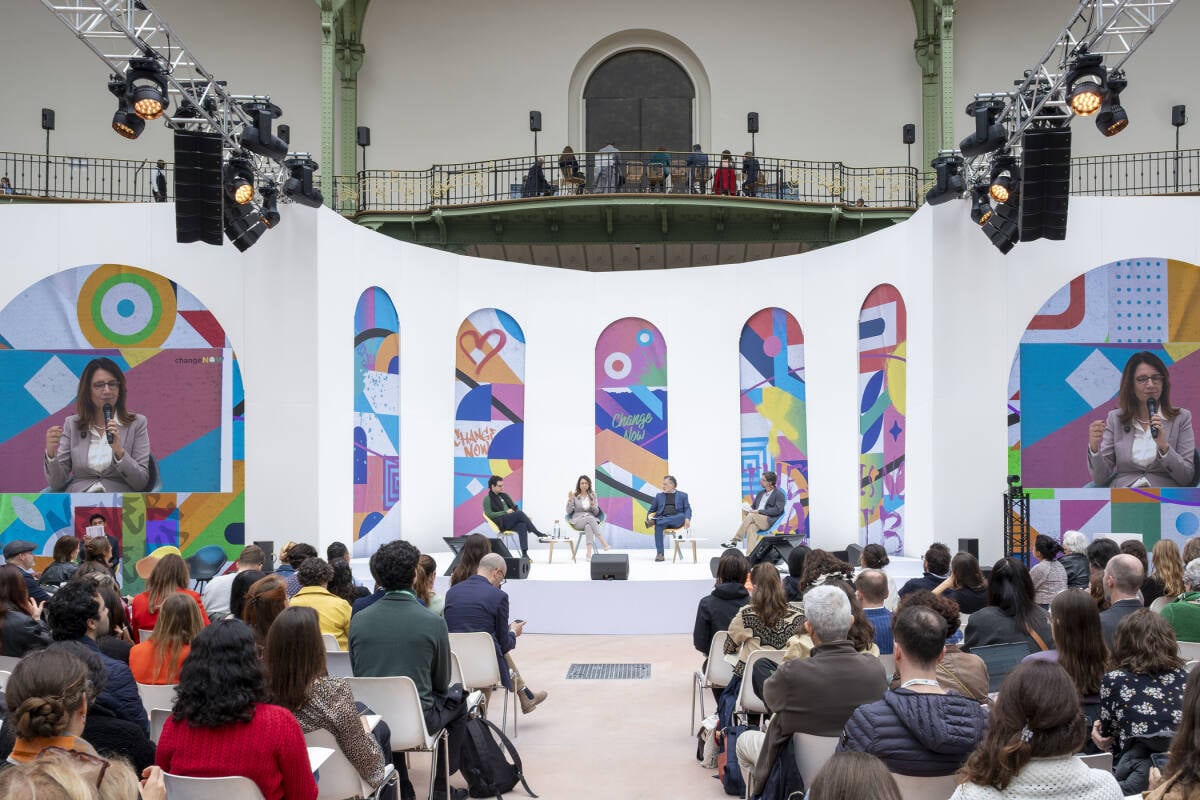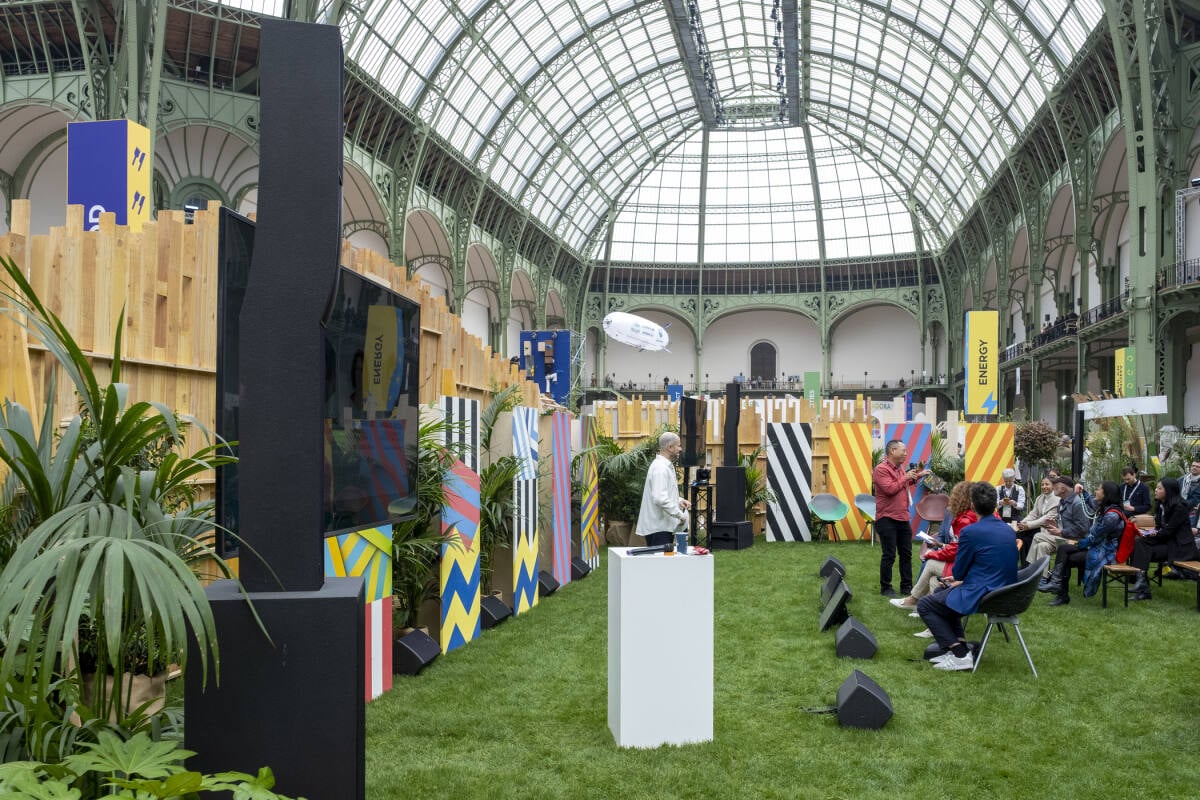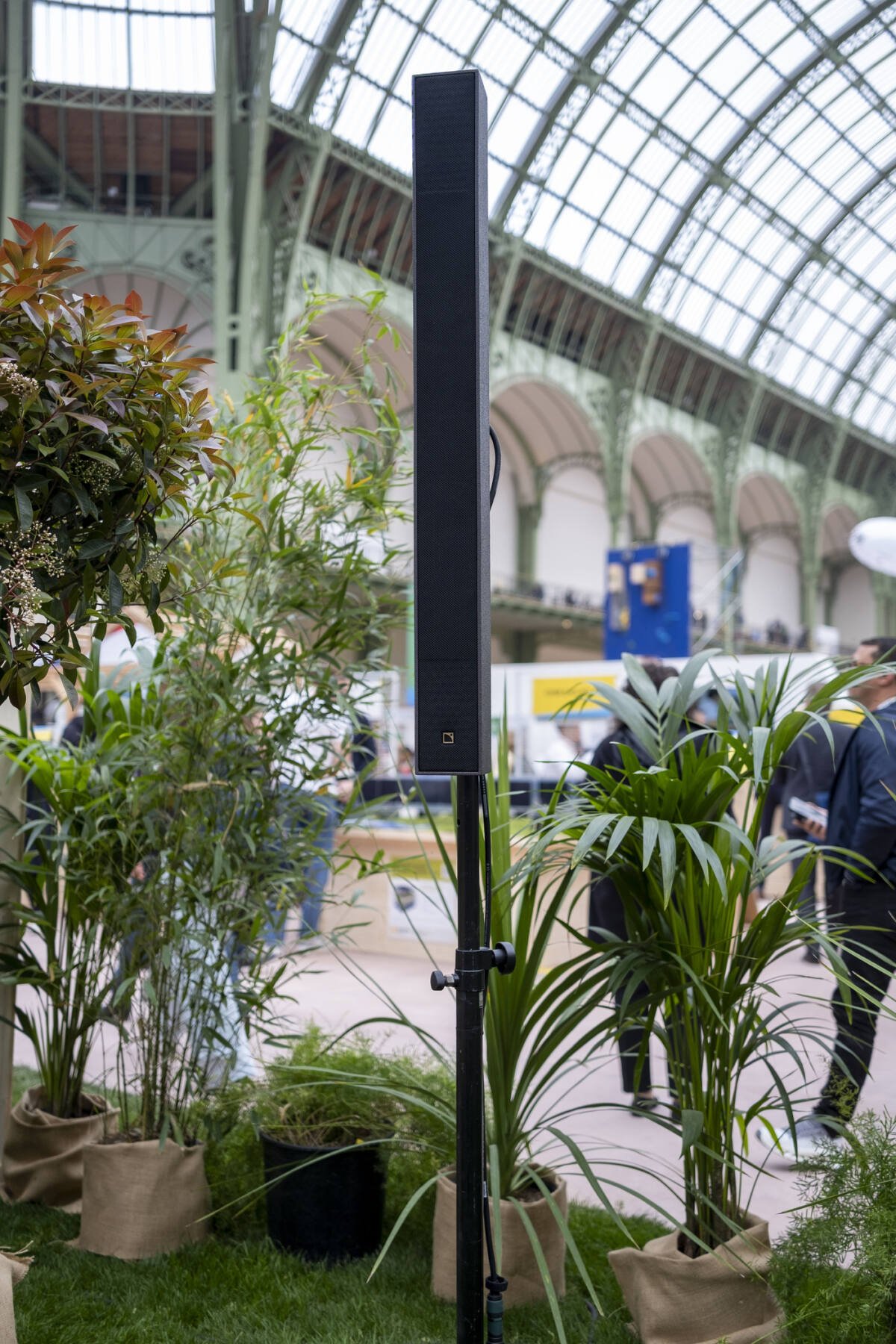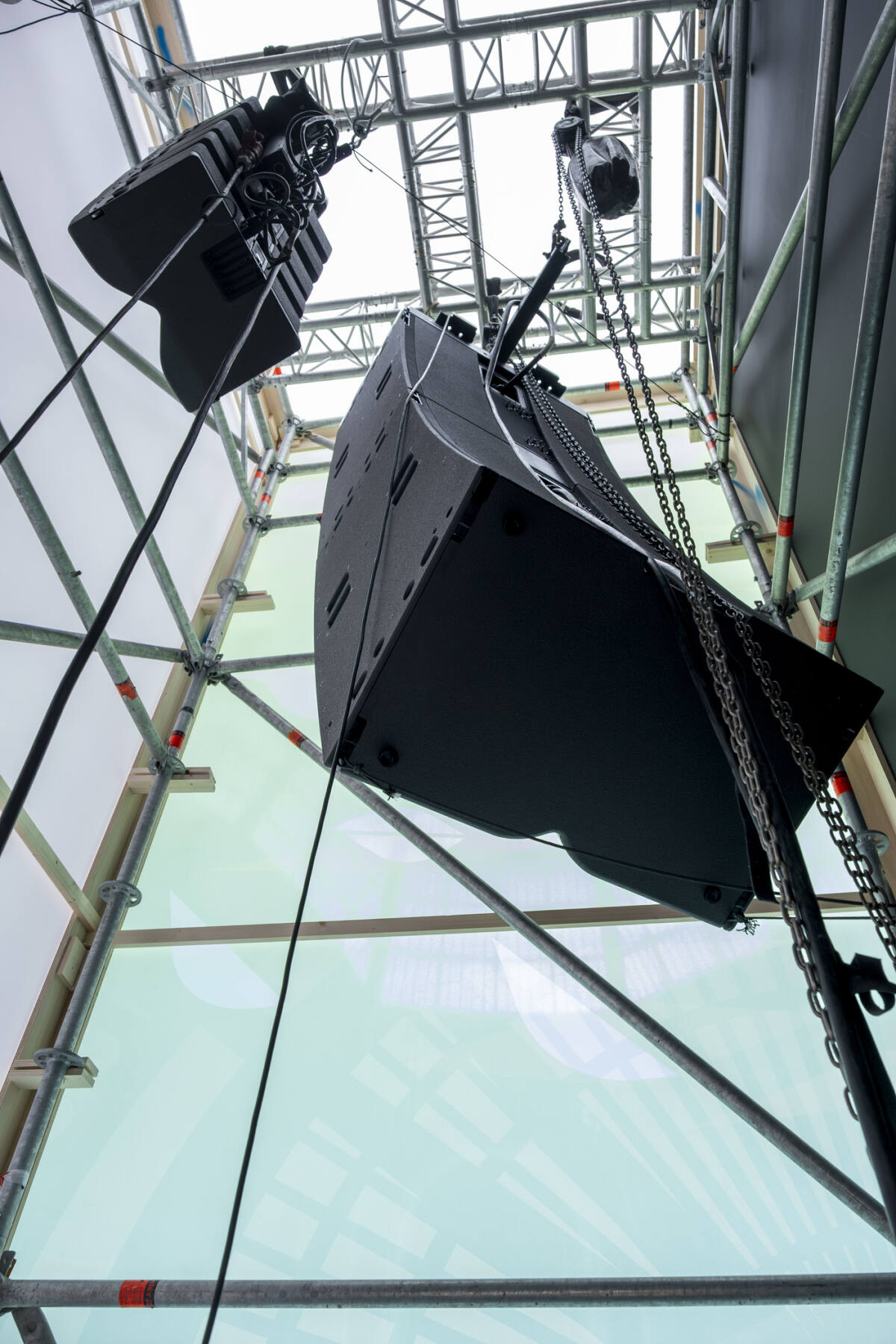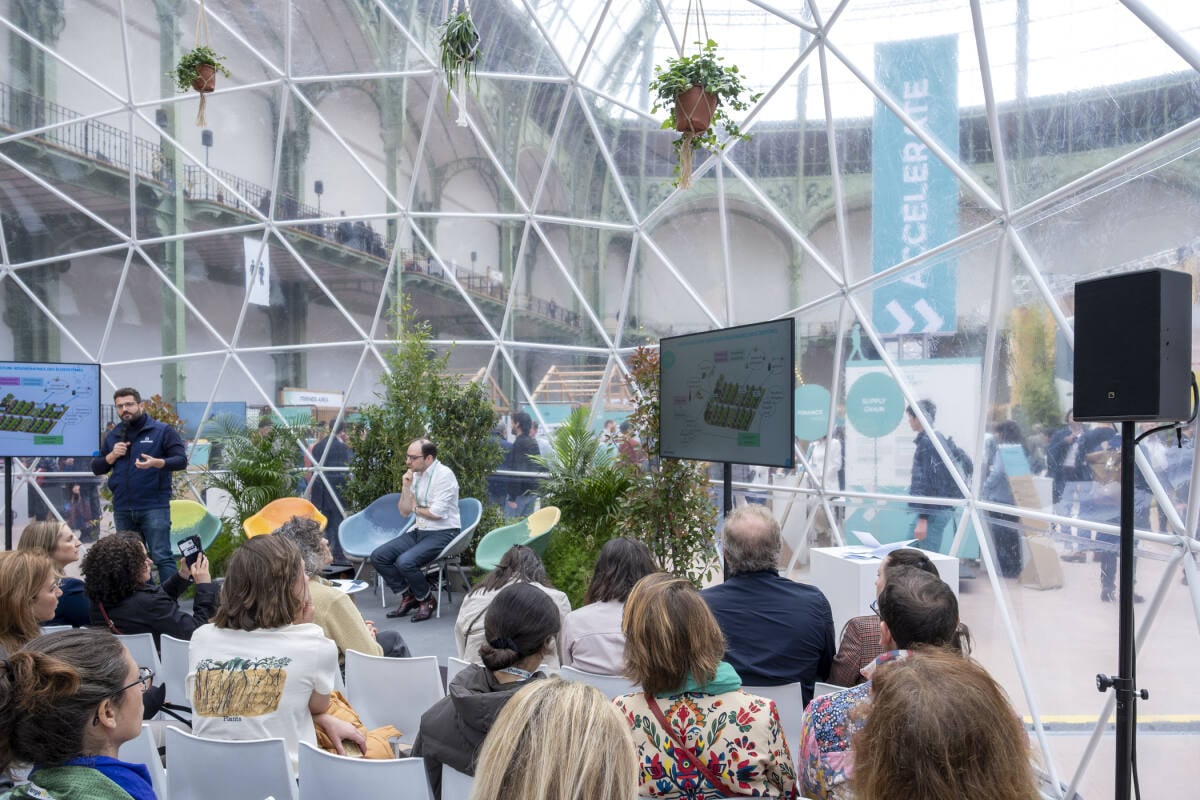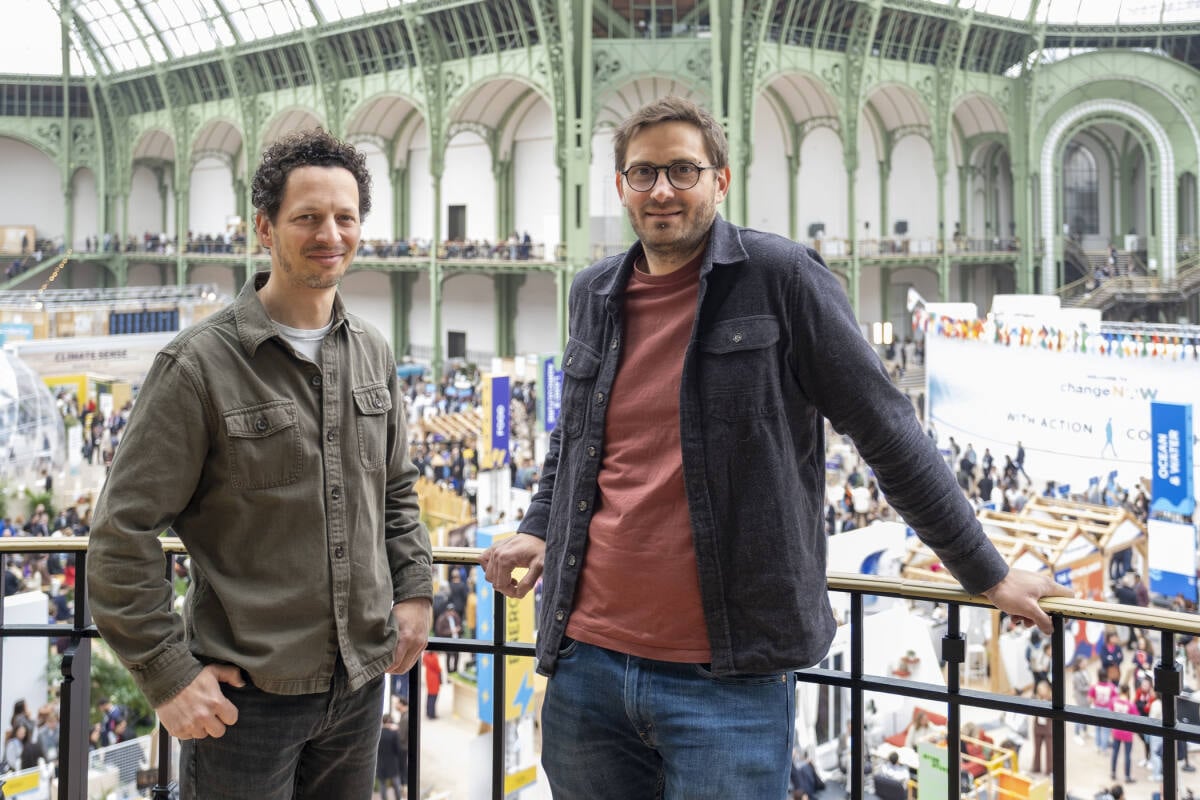changeNOW, Europe’s most impactful sustainability summit presents an audio engineer’s ultimate challenge: 20 simultaneous performance zones operating across Paris’s iconic (and reverberant) Grand Palais.
The three-day event hosts 40,000 attendees from 140 countries in a unique format that combines international conferences with live artistic performances. Six main stages plus 14 additional performance areas must function simultaneously throughout the event, creating substantial sound spill challenges in the glass-domed venue.
Previous editions relied on headphone systems to solve the interference problem, but this isolated audience members in individual audio bubbles. This year, changeNOW and events agency Moma Event, led by Production Director Catherine Durand and Technical Director Olivier Duraton, challenged Fleik, their audio partner, to eliminate those headphones entirely while maintaining pristine sound quality across all twenty zones.
The technical hurdles were significant. “The two main challenges were limiting interference between the six main stages and enabling the balconies to use traditional loudspeaker systems rather than silent headphones,” explains Antoine Secondino, Co-Founder of Fleik.
Rather than implement a complete system replacement, Fleik took a methodical approach to validation, testing their concept incrementally. “We tested the concept on the first day, running loudspeaker and headphone systems simultaneously,” Secondino notes. “Gradually, as adjustments were validated on site, we removed the headphones in favour of conventional broadcasting.”
Fleik’s solution centred on an L-Acoustics L2 system for the main Legacy Stage, where speakers would be using omnidirectional microphones. L Series was chosen for its ability to deliver clear sound for both spoken word and music, while limiting spill into adjacent zones and backstage areas. The team collaborated with changeNOW over eight months of planning and design, developing and refining dozens of plans using L-Acoustics Soundvision 3D audio modelling software to achieve the desired result.
Achieving the desired performance at this scale demanded precise predictive modeling. Soundvision’s integration with 3D design tools like Vectorworks and SketchUp enabled the team to optimise each system within the venue’s complex architecture before any equipment arrived on-site.
“Soundvision proved essential,” notes Jérémie Kokot, Co-Founder at Fleik. “It helped us predict coverage patterns, SPL distribution, and interference zones, allowing us to size our systems to the nearest enclosure with surgical precision, which was absolutely vital for this project.”
The Legacy Stage, featuring an LCR setup, served as the acoustic anchor for the event. It included dual L/R hangs of L2/L2D, a centre cluster of four Kiva II loudspeakers and ground-stacked KS21 subwoofers arranged in cardioid configuration. Syva and Syva Low pairs were used for in-fill, X8 enclosures handled the front-fill and Kiva II arrays provided coverage for the surrounding stairways.
The Collective Stage was equipped with nine Kiva II loudspeakers per side, with a centre cluster reinforcement, and dual SB18 subwoofer stacks in cardioid mode to maintain acoustic isolation between zones.
The Gallery Stage featured Syva and Syva Low pairs, supported by SB15m and Syva Sub configurations. A distinctive delay solution used discrete Soka enclosures mounted on lighting totems around the audience area to ensure consistent sound coverage.
The Agora Stage employed dual seven-element Kiva II hangs with additional out-fill arrays and SB18 subwoofers to reinforce low-end frequencies.
The Garden Stage mirrored the Syva-based configuration, combining it with SB15 subwoofer reinforcement and four strategically placed Soka loudspeakers for delay coverage. Several intimate performance areas, ranging in capacity from 70 to 220 people and located across balcony zones, workshops, and community spaces, used precisely positioned X8 systems, each supported by dedicated 108P monitors.
All sound systems across the venue were powered by LA12X and LA4X amplified controllers in conjunction with P1 processors. The equipment was supplied by L-Acoustics Certified Partner, Novelty.
Each stage system was carefully tuned to minimise audio interference while maintaining full-range coverage for diverse programming spanning voice as well as recorded and live musical performances. Fleik prioritised line-source systems over point source throughout the installation for their ability to accurately direct sound to minimize interference between stages.
“The beauty of this project lies in what it represents,” says Secondino. “We didn’t just solve an acoustic puzzle – we proved that we don’t have to compromise between event complexity and audio quality. Traditional sound reinforcement can work everywhere, even in the most demanding environments, when you have the right tools and the courage to push boundaries. The feedback was unanimous: both the end clients and our production manager were blown away by the result.”


